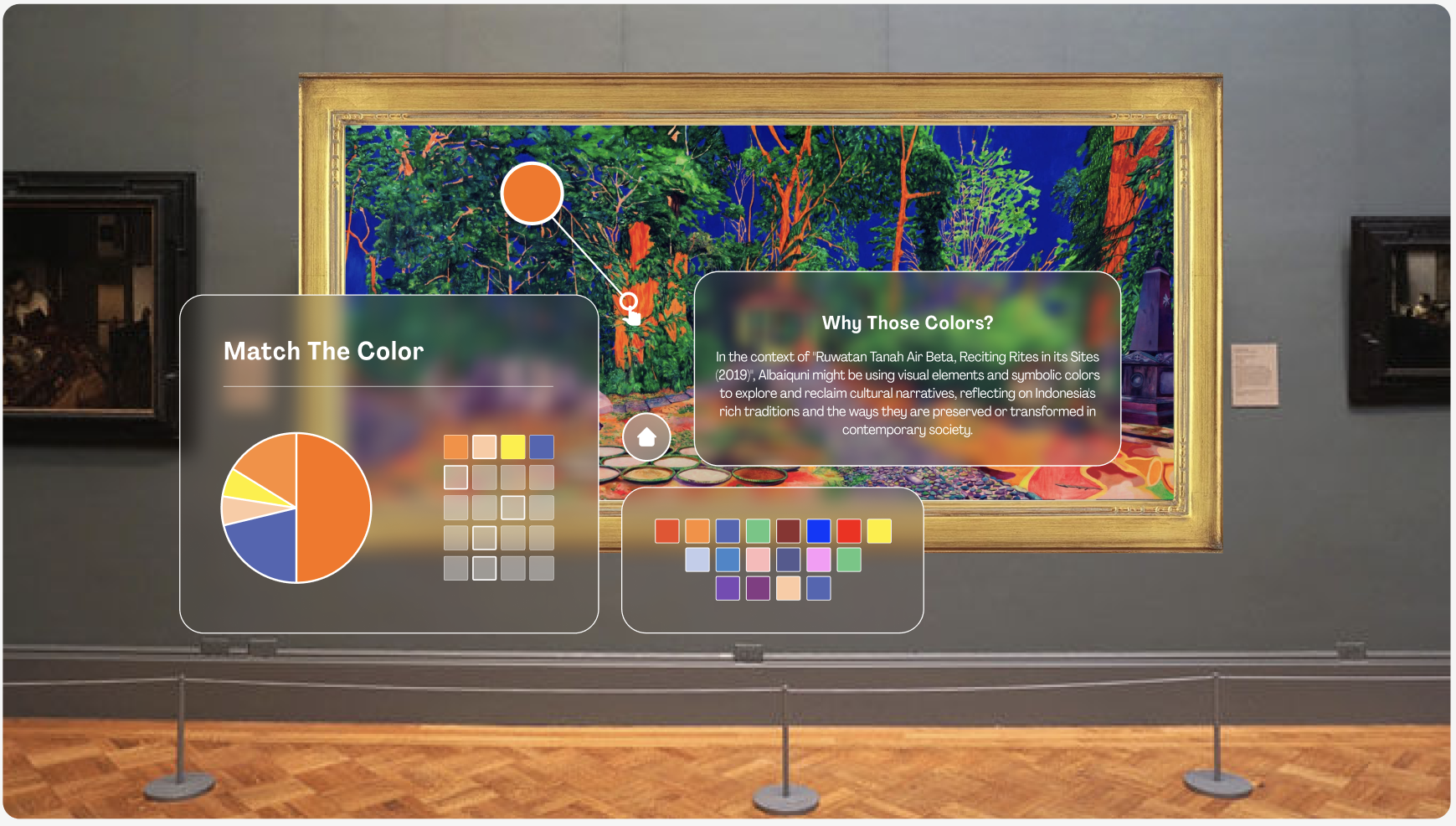ARtifacts | Ephemeral interfaces
Professional project at Hogschool Van Amsterdam
Client: WereldMuseum - kossmanndejong Consultant: Faraday (formerly Fonk) digital agency
Timeline: 6 month
Tags: Interactive experience | Augmented reality | Social awareness
project brief: The future of interfaces is focused on temporary experiences. We aim to provide museum visitors with a personalized experience using custom interfaces based on their "museum profile."
project roles:
Ideation
UX
Digital and physical prototyping and testing
pitching and presentation
The big problem
Museum visitors include tourists, students, researchers, and enthusiasts. They all receive the same information about each exhibit. What if you want more details and access to related resources? What if you're bored and want to learn through games?
How can we, as exhibition designers make sure we are providing a right amount of information for a family that is visiting an exhibition with their 2 children of different age? can a 60-word description besides each artifact do justice for the history behind it?
ARtifact: customized museum interfaces
Museum visitors come from different backgrounds and expertise levels. Upon entering, they can fill out a simple questionnaire to share this information. After completing it, each visitor receives a Microsoft HoloLens device that serves as a personal guide during their visit. For example, if a visitor labels themselves as an “expert” or “researcher,” the HoloLens offers custom displays that cater to their needs, including interviews, resources for research, and a list of related academic papers on the artifacts they are viewing.
ARtifacts reimagines museum visits through personalized augmented reality (AR) interfaces. Collaborating with WereldMuseum and Kossmanndejong, we developed an interactive experience that dynamically adapts to visitors' personal interests and profiles. Using Microsoft HoloLens, ARtifacts enhances engagement and deepens visitor interactions with exhibits by offering customized content, interactive games, and in-depth academic resources.
The process
User Journeys & Pain-Gain Analysis
After our first visit to the museum we tried to define different zones and color code them to understand the exhibition better.
We color coded the different zones based the existing color theme that they had so that we can easily distinguish places that we want to work on.
In-depth Research & Archetype Development
Interface Customization & Prototyping
Application development
Mapped detailed visitor journeys, highlighting critical pain points such as information overload, insufficient engagement for children, and uniform visitor paths that neglect personal interests.
Execution and reflection
This project significantly broadened my understanding of how technology can personalize and enrich experiences in public spaces. I particularly enjoyed bridging digital and physical interactions, observing direct user responses to our interfaces, and iterating our designs accordingly.
Key reflections include:
Understanding visitor diversity is crucial for meaningful design in public cultural contexts.
The necessity of combining empathy-driven UX with advanced AR technology to deliver impactful experiences.
The value of clear communication and effective pitching to successfully advocate innovative ideas to clients and stakeholders.
Identified eight visitor archetypes—Expert, Achiever, Explorer, Socializer, Facilitator, Recharger, Collector, and Experience Seeker—to inform targeted design interventions and ensure inclusivity.
Developed and tested bespoke AR interfaces tailored for specific archetypes, such as detailed scholarly insights for experts, gamified experiences for explorers, and structured learning objectives for achievers.
As shown above, we developed the app for Hololens in Unity. We chose the “botanical garden” painting by Zico Alberquini, because it was a noticeable and very vivid piece. We noticed that it attracts visitors, so we also based our application on this painting.
Also the vast color pallet and number of element in this painting gave us many options to paly with.















